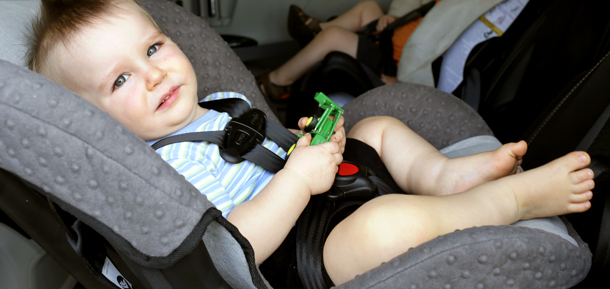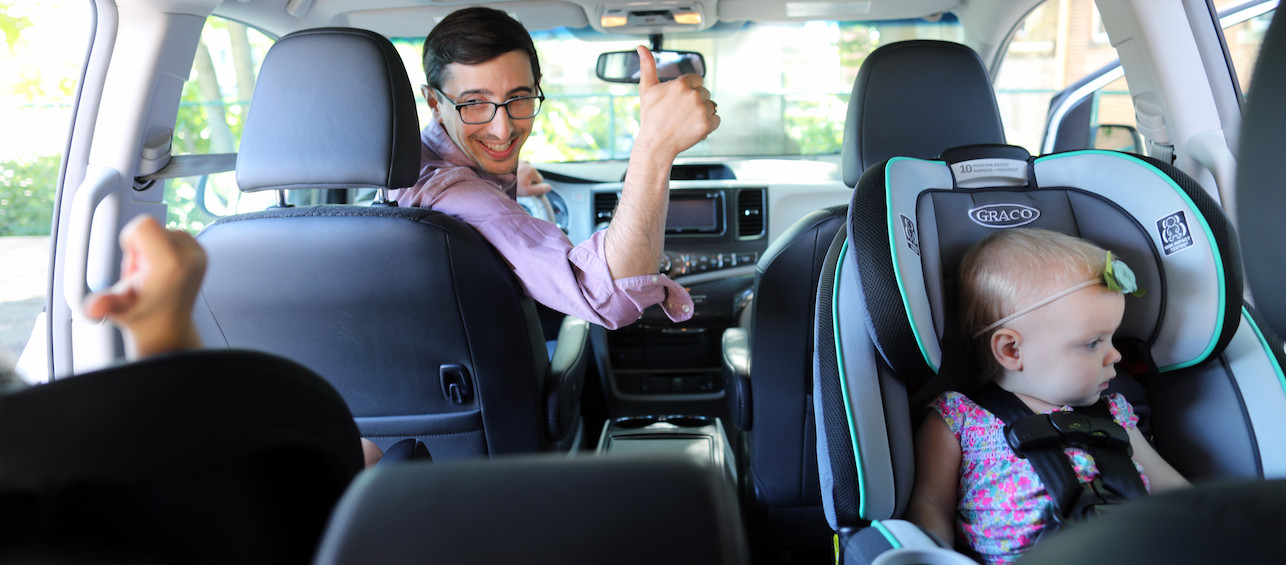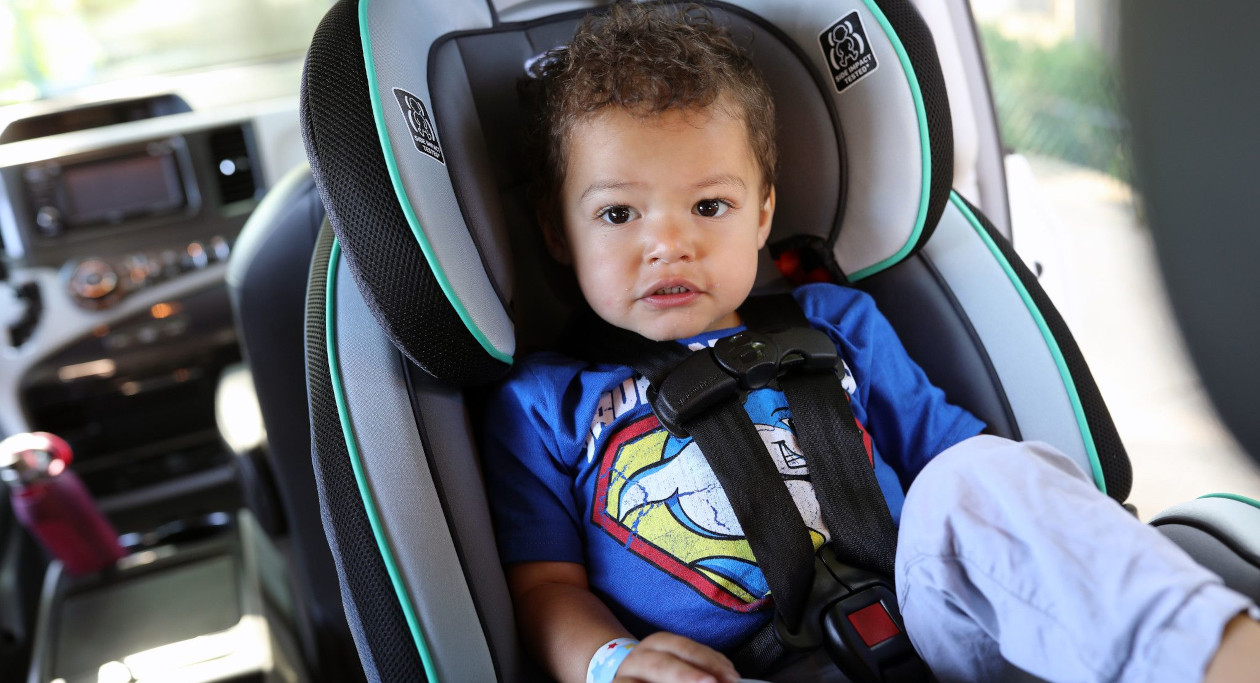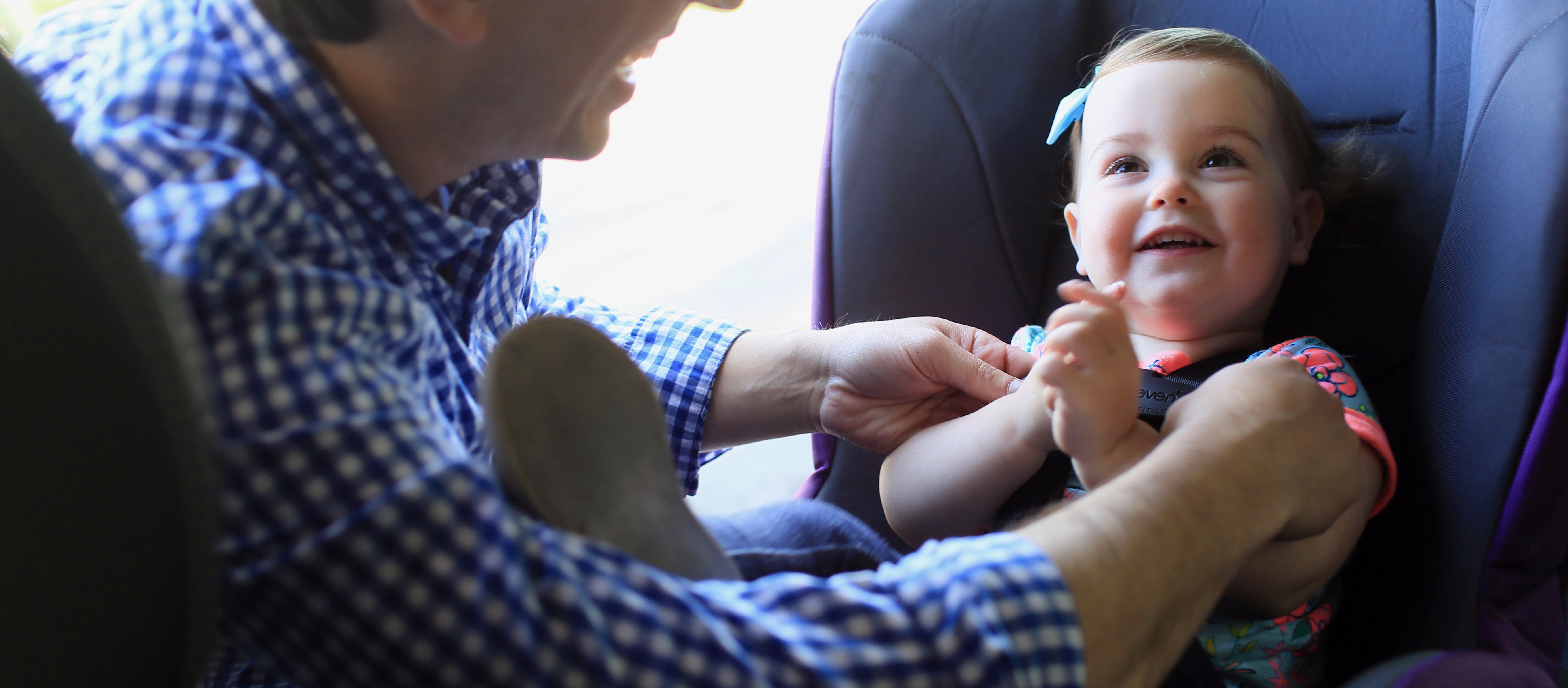When I’m advising parents on child passenger safety and doing personalized car seat checks through the Comprehensive Children’s Injury Center, I often hear comments along the lines of: “I don’t want her to be uncomfortable” or “That seems really tight” when I demonstrate how tight a child’s car seat harnesses should be.
As part of our car seat check process, after the seat has been properly installed, the last step is to make sure the child is harnessed into his or her seat correctly. This step is an essential one. It’s great if you get your child’s seat in correctly, but if their harnesses aren’t properly fitting, it’s not going to do much to keep your child safe in the event of an accident.
Harnesses are what keep your children held within their seats, especially if you are in an accident, so positioning the belts and tightening them correctly is an absolute must.
When a child is rear-facing, we prefer the harness straps to be coming out of the slots right at, or right below, your child’s shoulders. This ensures the straps hold the child down within the shell of their car seat.
When a child turns to face forward, the harness straps should now be coming out of the slots at or above their shoulders. This helps to provide just a bit of give if they are in an accident.
Once the harness straps are in the correct spot to best protect the child, the next step is to ensure those straps are tight enough. Yes, they should be tight. However, not so tight that it’s causing your child harm or making her or him super uncomfortable.
I always tell parents that the harnesses are tight when they can’t pinch any excess of the harness fabric. This is called the “pinch test.” If you can’t pinch any fabric at your child’s shoulders, you’re good to go!
The last step, I promise, to proper harnessing is to slide the chest clip on your child’s harness up to their nipple or armpit line. This step helps to prevent the harness straps from being able to slide off the child’s shoulders.
The combination of tight harnesses and the chest clip properly positioned ensures your child rides safe and protected in the unfortunate event of an accident.






I’m a fireman with the city of Cincinnati. I would like to take a class on how to install child seat. I do not think my department is giving that class to us anymore and I would love to learn how. We get a lot of people who stop at the fire house for car seat help but only to turn them away. I want to be able to help everyone that stops by for help, because that’s what we do is help people.
Thanks.